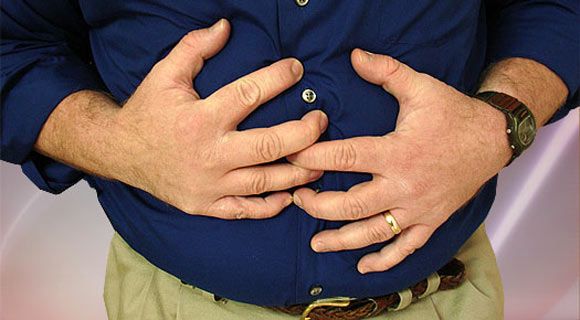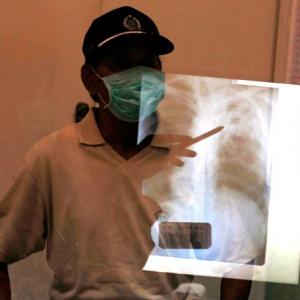Hepatitis B virus is 10 times more infectious than hepatitis C virus and 50-100 times more infectious than HIV, says Dr Avnish Seth.

Hepatitis, also known as inflammation of the liver is one of the common causes of infection across the world.
In India, according to the World Health Organisation, nearly 40 million people are chronically infected with Hepatitis B and as many as 12 million are affected by Hepatitis C.
Despite numerous awareness campaigns, there are several myths surrounding the disease, which is leading to delayed diagnosis and treatment.
On World Hepatitis Day, celebrated July 28, here are some myths about the disease and the truth behind them.
#1. Myth: All Hepatitis viruses are the same.
Fact: Hepatitis A, B, C, D and E are different viruses with different modes of transmission and clinical manifestations.
While Hepatitis A and E are transmitted by ingestion of contaminated food, Hepatitis B and C are transmitted by blood transfusion, unprotected sex and tattoos.
Hepatitis D occurs only in patients with Hepatitis B.
#2. Myth: Hepatitis A is the most common cause of Hepatitis in adults in India.
Fact: By the age of 10 years, more than 95% children are already positive for Hepatitis A indicating poor sanitation and hygiene in the country.
Hepatitis E is the most common cause of Acute Viral Hepatitis in adults in India. Unhygienic street food is a major culprit.
#3. Myth: One can differentiate between various types of Acute Viral Hepatitis (AVH) based on clinical symptoms.
Fact: Patients with AVH develop a short febrile illness followed by loss of appetite, high colored urine and vomiting.
Jaundice usually lasts for 2 to 3 weeks and may be associated with intense itching. The type of virus causing the illness can be differentiated only by blood tests.
#4. Myth: All patients with AVH have jaundice.
Fact: Absence of jaundice does not rule out acute hepatitis viral infection, which can present sometimes only with constitutional symptoms such as fever, vomiting, poor appetite, lethargy with high liver enzymes.
#5. Myth: Hepatitis is a genetic/hereditary disease that is passed on from parent to child.
Fact: Hepatitis is not a genetic disease and is not inherited. However, Hepatitis B is often transmitted from mother to child during the birthing process.
Transmission from the mother can be prevented if her HBV status is known and immunoglobulin and vaccine are administered to the newborn within 12 hours of birth.
#6. Myth: Hepatitis virus A and E can spread with-in the family.
Fact: By the time jaundice appears the patient stops shedding virus in stool and becomes non-infectious.
Epidemics of Hepatitis E usually result from contamination of a water source with sewage.
#7. Myth: Vaccine is available against all types of Hepatitis virus.
Fact: Vaccines are available only against Hepatitis A and B
#8. Myth: If one gets hepatitis A, then one is immune to the other forms of hepatitis.
Fact: Patients with Hepatitis A get lifelong protection against hepatitis A only. One is still at risk of infection with other forms of hepatitis like B,C and E.
#9. Myth: Hepatitis virus cannot survive outside the human body and cannot spread with-in the family
Fact: Hepatitis B virus is 10 times more infectious than hepatitis C virus and 50-100 times more infectious than HIV.
Hepatitis B virus can survive in dried blood for up to 7 days and remains capable of causing infection.
Hepatitis C virus can survive on environmental surfaces for up to 16 hours.
It can also spread from infected fluid splashes to the conjunctiva. Barrier contraception is recommended.
#10. Myth: One should limit oneself to only bland and boiled food during hepatitis.
Fact: Good nutrition is important during hepatitis. In the presence of nausea and vomiting, whatever the patient desires to eat should be welcome.
Glucose solution, sugarcane juice, bitter gourd, radish are not recommended.
Consumption of turmeric need not be restricted as it has anti-inflammatory properties.
#11. Myth: Breastfeed is unsafe during Hepatitis.
Fact: Breast feeding is safe as Hepatitis virus cannot be transmitted to the baby through breast milk.
#12. Myth: Tattooing and piercing do not transmit Hepatitis B and C.
Fact: Use of unsterile sharp instruments for procedures like tattooing, piercing, face cleaning, manicure, pedicure may transmit the viruses.
#13. Myth: It is safe to consume alcohol as soon as the jaundice disappears.
Fact: The liver takes upto 6 months to repair itself. Alcohol should be avoided for 6 months after Hepatitis A and E and for life in patients who develop Chronic Hepatitis B or C.
Dr Avnish Seth is director, gastroenterology / hepatobiliary sciences at Fortis Memorial Research Institute, Gurugram
TELL US: How do you stay fit and healthy? Share your tips and suggestions in the messageboard below.









